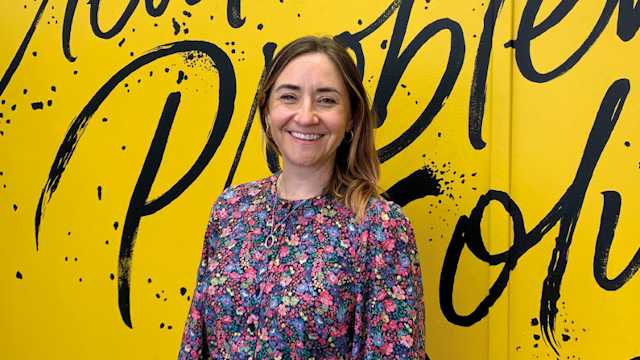With tech spending down, how can agencies diversify client rosters?
As digital agencies seek to adapt to lower tech spending, we ask a crop of agency leaders in the UK and US how they’ve created more diverse client rosters at their businesses.

Network and indie experts advise how agencies can diversify their client base / Unsplash
Several agencies have been wounded in recent months by overexposure to the American tech sector. Previously an attractive client category, falling spend among those clients has disproportionately hit digital agencies such as R/GA, or tech-oriented groups such as Stagwell.
This isn’t a new problem. Overdependence on a single source or segment always engenders risk. So, if you realize your business is hooked on a single sector or client category, what can you do in the medium term to widen your range of customers? A new approach to pitching? Reimagining the way you bring your services to market? Or something else?
Advertisement
How do you solve a problem like... diversifying your client roster?
Nicole Souza, chief marketing officer, Saatchi & Saatchi: “It is indeed a common challenge amid agencies, and I actually think it's a good one to have. An agency with proven success in one sector or client category will also have the right talent and creativity to diversify its client portfolio. It becomes an exercise in identifying sectors with commonalities to the experience the agency has in-house already. Things like similar consumers or business challenges are often those commonalities. Once identified, the agency can build a team with the right creative minds and passion for a new sector. With the ability to draw parallels using creativity to solve challenges, the agency will see it’s possible to grow into new sectors.”
Joanna Trippett, managing director, Dept UK: “Start with a critical review of ‘why’ - is it a lazy new business approach, is it because one holding company grew arms and legs, or something else?
“This question is important because it helps you work out where to put your effort, into strategies like reviewing your network, reviewing your team’s capabilities, proactively pitching to clients, new service lines that speak to a broader set of clients; pro-bono work for a charity that operates in a new sector & finally - don’t be too picky - get a foot in the door knowing that’s your gateway client to diversify your business making it more resilient.”
Advertisement
James Kirkham, chief executive officer, Iconic: “When running my first agency, Holler, I pivoted the client roster at our creative peak. We were working for Channel 4, (E4, 4Music, More 4, Big Brother) but despite the output, revenues were dominated by one client and this was dangerous. So we took this thinking into food and beverages, which led us to work on Innocent Drinks and Red Bull. As an agency, you need to find the common thread which works equally from broadcasting, beer to badminton. You should see what resonates and bring this know-how to another category who can unashamedly borrow from those learnings.”

Annabel Mackie, managing director, Five by Five: “We diversify our client roster through the lens of our marketing experience rather than sector specialty. We’re fortunate to have a senior leadership team with experience across all disciplines, and in our combined careers there aren’t many sectors that we’ve not worked in.
“The reality is that the problems faced by clients are similar across most sectors, as are the principles of effective marketing. Applying the proven principles of, for example, loyalty and CRM, brand strategy, or performance marketing in the context of a specific sector will maximize the impact a brand makes. We’re finding this approach is opening doors.”
Suggested newsletters for you
Geoff Renaud, chief marketing officer and co-founder, Invisible North: “Invisible North found a similar challenge this past year as web3 clients and large tech companies propelled our 250% growth in 2022. Both sectors had marketing budgets severely impacted and we were in a bit of a panic in Q4 22 as we looked forward to 2023. Fortunately, we were able to abstract some of the best elements of the work that we did for these clients and transpose our learnings to recession-proof clients including PepsiCo, Bacardi, and others.
“This included integrating our expertise in emerging technologies like AI, web3, and VR into CPG and liquor campaigns. It’s been a very successful strategy for us and our learnings have benefited our client's campaigns greatly. My recommendation for agencies looking to diversify their client roster is to never take for granted how the knowledge and expertise you may have in one business sector can be seen as fresh and exciting for another sector that may not have exposure to these mediums.”
Alex Friedman, President of Ruckus Marketing: “Ruckus has always stood by the importance of a diverse client base, having worked with everyone from the Catholic church to women's underwear. The key to successful work across a diverse roster is identifying commonalities and use cases throughout varying industries. There's so much value in taking what we’ve learned working on an enterprise tech company and leveraging it with a DTC brand (and vice versa). When you remove the thin veil of specific industries and products, brand challenges can be distilled into only a few buckets, which makes cross utilization key in diversification.”
Reid Carr, chief executive officer and executive creative director, Red Door Interactive: “One phrase we’ve used is, ‘funny client math.’ If we had retail and food experience, that got us into the restaurant category. Most clients choose agencies based on category experience and it takes thoughtfulness to find that bridge. To diversify, agencies must find categories with different economic cycles but similarities to current clients (audiences, targeting, competitive profiles or customer decision-making processes) and present this to new clients, so they feel comfortable with the agency has experience. At Red Door, we’ve leveraged seasonality and economic cycles, and been deliberate about this process because we desire to be independent and multi-generational.”
Matt Steward, CEO of Above and Beyond: “Here’s some principles we’ve learned to live by. Firstly, horizontal; not vertical: a healthy agency is an agency that can draw on customer understanding, not vertical specialism. With an obsession with the audience, we apply this to everything from fashion to FMCG, to tech to charity. In our case, human behavior is a specialism.
“Second – diversify, don’t dilute: we have built out from brand communications to brand experiences. If we know a brand, we should understand that experience is about more than comms. Finally, double down where it matters: we only pitch where we can win, and grow where we have traction. A focused growth strategy is about knowing who you are wrong for, as much as who you are right for. Move forward with a plan and purpose.”
Russell Oakley, co-founder, The Go! Network: “If you’re pitching against agencies with far more sector experience, you need to find ways to ‘bridge the gap.’ This could be partnering up with other agencies that have the sector experience you need, but lack the skill set to fully deliver, or focusing on ‘crossover’ sectors - where your processes and experiences can speak to the wider requirement. Similarly, focusing on briefs where the objectives, audiences, or sales cycles line up with existing experiences, even if the industry doesn’t, can help to translate your efforts.”
Louise de Ste Croix, head of growth and founding partner, BrandOpus: “One way to diversify your client roster is to ensure your proposition is sector agnostic. For example, the branding challenges clients come to us with are in fact marketing challenges. They want to stand out, be more memorable and, ultimately, drive preference with consumers. That’s a challenge every industry faces. As a result, our expertise translates across sectors – a successful case study from the FMCG sector would still provide a great demonstration of our capabilities to potential clients in other spaces, such as finance or healthcare. This helps us remain resilient, avoid over-reliance on a particular sector and strengthen our new business pipeline.”
Patrick Lafferty, chief operating officer at Acceleration Community of Companies: “Human nature will always gravitate to what is known. The discomfort of difference must be managed. Agencies frequently start with an anchor client, do a great job, and attract more from that sector. Soon, they become known as the ‘X’ sector agency. They should use PR, awards, and thought leadership to be seen by a wider swath of brands, just as they help their own clients get the right message to the right audience at the right time. To use limited resources to go after new business, ensure a diversity of talent by refreshing staff, look for people with different experience in different sectors and environments.”
Joe Burdon, head of sport and entertainment, The Romans: “Some sports, like women's football, are attracting new audiences or growing their current ones to the extent that brands that haven’t previously considered sports marketing are now doing so. This puts new sectors on the table – and we are increasingly receiving briefs from latent brands coming to the realization that these burgeoning sports have engaged audiences receptive to marketing, and hungry for investment in the thing they love. Comms and sport both move quickly. If agencies can adapt to these ever-changing landscapes, we can be successful in winning new clients beyond those that have traditionally activated in sport.”
Declan Reilly, head of SEO, Evoluted: “Potential clients typically love case studies, so it can be easy just to lean into sectors you already have them in. Spending time to really analyze a new industry and what kind of strategy is required to make an impact is a great way to broaden the sectors you work in. It'll show the clients that you want to start working with that you still have knowledge in their specific area. We've done this recently by publishing an in-depth report on the Car Leasing sector and it's helping to create conversations that may not have otherwise opened up.”
Dan Eisenberg, chief marketing officer, Blue Chip: “We move next door. Because we work with several CPG category leaders, we’re often locked out of opportunities to take on new food, beverage and household clients. So, we approach adjacent categories where our consumer understanding also matters. Our experience with CPG household cleaning products taught us how homeowners keep their homes clean, which helped us win business with several home appliance brands. Our experience with food brands around big holiday occasions allows us to show up as experts with kitchen accessories. We can expand without stretching too far from our core.”
Burning up from your hot take? Get in touch (sam.bradley@thedrum.com) and I’ll let you know what next week’s prompt is.

